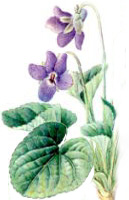
I'm as absentminded as a college professor and keep forgetting to water my plants. Self watering pots (or containers) have saved many a plant's life in our home. They are expensive, though, especially when you need big ones. That's why I'm making my own.
You need this
Plastic box/container (in this post I'm using the plastic box FLAJ from IKEA.)
Leca
Synthetic fabric or tulle
Plastic tube
Soil
Remember to check that the place where you put the container can hold heavy objects. The pot described down below weighs twenty kilos (44.5 pounds) when it's finnished.

1 Start by covering the bottom of the box with a thick layer of leca (at least 7cm/3inches). Dig a hole in the middle to sink part of the soil into the water, this part will wick water into the rest of the soil.

2 Cut the plastic tube into the prefered length and cut an opening at the side of one end to allow water to flow into the magazine. The best length of the tube is from the bottom of the container to the rim or one centimeter (1/2 inch) above it.

3 Put the tube, with the opening end down, into the leca layer, close to the corner of the box - that way you'll loose the least growing space.

4 Take a piece of synthetic fabric/tulle and cover the leca layer as well as a big part of the sides of the container. It will keep the soil from drissling down between the leca pebbles. You don't have to sow any fancy bag, just cut a square big enough in roughly the same shape as the box. To fit in the tube, just make a cut from one of the corners towards the middle of the piece and wrap the two ends around the tube.

The reason to use synthetics is that your soil may carry worm eggs. These hatches and the worms tend to eat anything from natural sources. (And no, you don't have to use as fancy fabric as I do on the pictures - that's my old bride's veil now serving a better prupose. Usually I use brown tulle.)

5 Fill the container with soil. Be carefull in the beginning untill you have stabilized the tube, then you can dig away till your hearts content. Be sure to leave a rim of at least two centimeters (one inch) so you wont get problem with running soil.

The advantage of using semitransparent boxes is that you can see how much water there's left in the magazine. This box store about two and a half litres, which means you'll have to water twice a week when it's sunny outside.
Congratulations! You are now the proud owner of a home made selfwatering container.


















